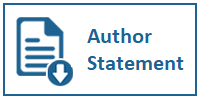Semiotic Analysis of Tourism Soft-Selling: Decoding Short Films as Persuasive Narratives
DOI:
https://doi.org/10.31937/ultimart.v17i1.3547Abstract
Tourism marketing plays a crucial role in promoting destinations and attracting tourists. Nevertheless, tourism marketers are finding it increasingly difficult to attract the interest of potential travelers in a crowded digital environment. Short films have become a popular and effective medium to market destinations and influence tourist behavior due to their visually captivating storytelling and ability to evoke emotions in a short duration. Studying the impact of short films on tourism marketing is essential to comprehend their influence on tourist motivations, destination perceptions, and purchasing decisions. Therefore, this study aims to analyze the persuasion strategies used in promoting various tourist destinations through short films. By conducting a descriptive qualitative study, this study seeks to understand various semiotic elements and narratives in their short films to create persuasive messages that appeal to potential tourists. The analysis of these short films as persuasive narratives will provide insights into how cultural meanings are constructed and communicated through tourism marketing. By understanding the semiotic elements and persuasive narratives employed in these short films, we can gain a deeper understanding of how persuasive messages are crafted and how they influence tourists' perceptions and decision-making processes.
Keywords: semiotics; short film; tourism; promotional; persuasive narrative
Downloads
Published
How to Cite
Issue
Section
License
Authors retain copyright and grant the journal right of first publication with the work simultaneously licensed under a Creative Commons Attribution-ShareAlike International License (CC-BY-SA 4.0) that allows others to share the work with an acknowledgement of the work's authorship and initial publication in this journal.
Authors are able to enter into separate, additional contractual arrangements for the non-exclusive distribution of the journal's published version of the work (e.g., post it to an institutional repository or publish it in a book), with an acknowledgement of its initial publication in this journal.
Copyright without Restrictions
The journal permits the author(s) to hold the copyright without restrictions and will hold distributing rights without limitations.
The submitted papers are assumed to contain no proprietary material unprotected by patent or patent application; responsibility for technical content and for protection of proprietary material rests solely with the author(s) and their organizations and is not the responsibility of the Ultimart: Jurnal Komunikasi Visual or its Editorial Staff. The main (first/corresponding) author is responsible for ensuring that the article has been seen and approved by all the other authors. It is the responsibility of the author to obtain all necessary copyright release permissions for the use of any copyrighted materials in the manuscript prior to the submission.















